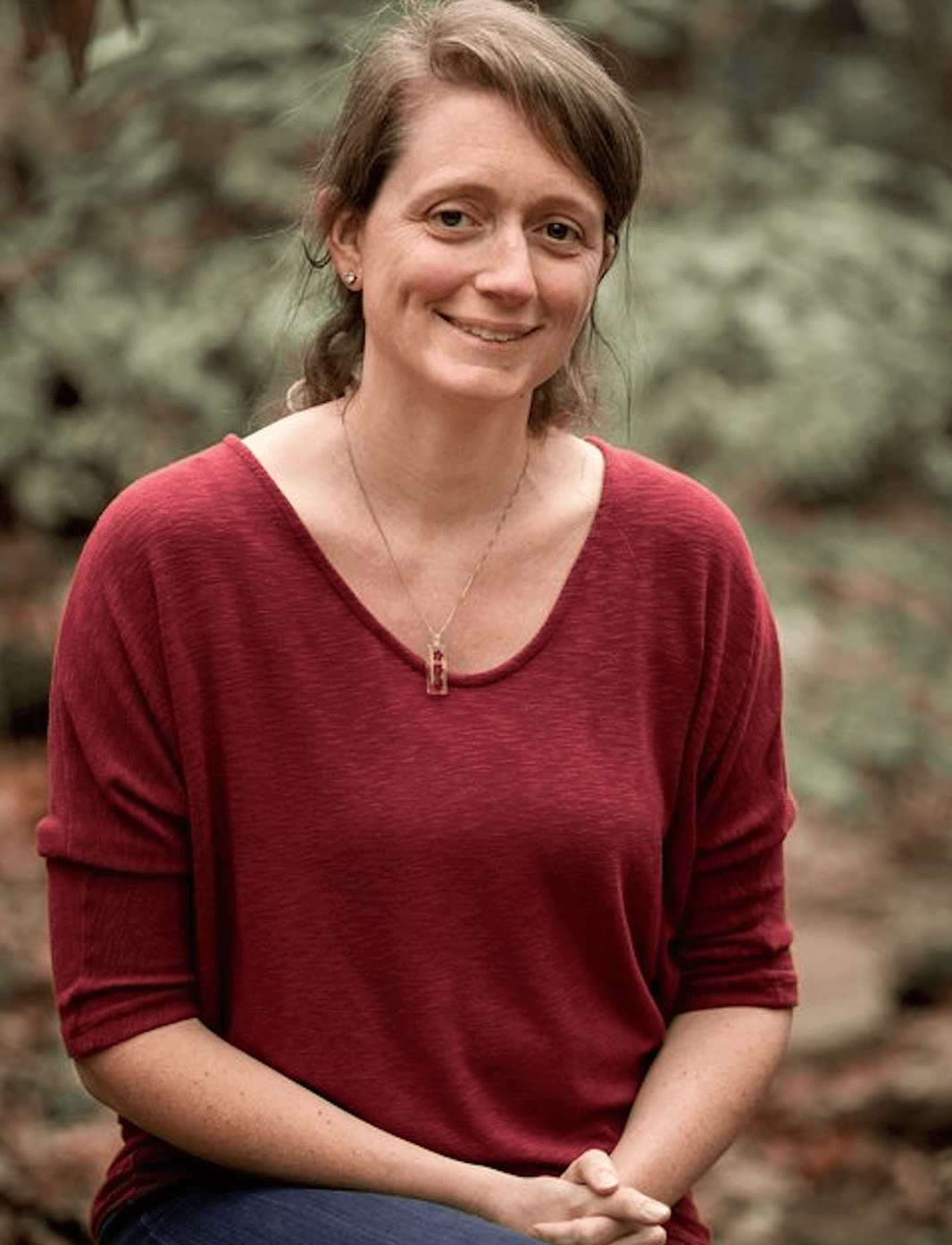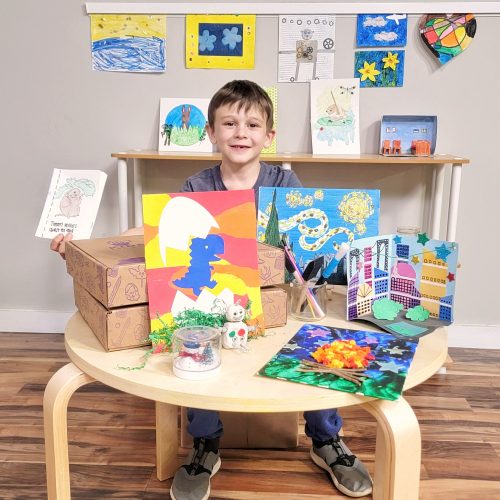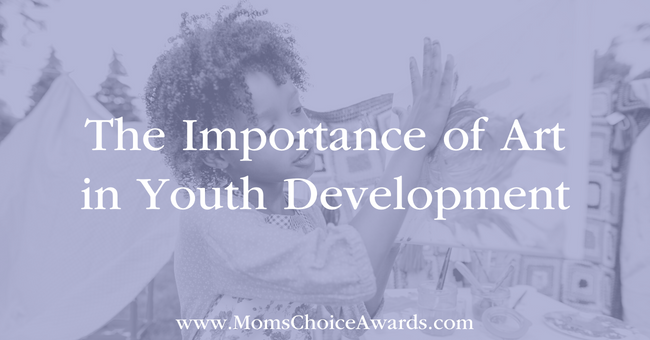 Melanie Phillips
Melanie Phillips
Co-Founder and Art Curator for Kids Art Box
Facebook | Instagram
 The one constant in childhood is changing. Every age is an adventure, surrounded by new skills, experiences, and growth. No matter what stage your child is in, art can foster youth development and encourage your child to hone their unique characteristics.
The one constant in childhood is changing. Every age is an adventure, surrounded by new skills, experiences, and growth. No matter what stage your child is in, art can foster youth development and encourage your child to hone their unique characteristics.Here are three reasons art is essential to your child’s development.
Art Fosters Problem Solving
The Montessori method of child development puts a significant emphasis on choice, giving children control of their learning. After all, children learn best when they can make self-directed choices and take the lead in a hands-on way. Art is a great way to put this method into practice.
Open-ended, process-oriented art projects encourage children to make choices and reach a conclusion that will help achieve results. Give your child a variety of high-quality materials and allow them to try new techniques. The result will be a combination that’s all their own.
Further, art projects encourage focus and patience, an essential skill in our one-click world. Many art projects require drying time or multiple-step processes to reach the desired outcome. To help foster self-control and engagement, consider an art subscription box that delivers multiple-step projects for your child right to your door.
The best art subscription packages contain more than one-and-done projects. Rather, they focus on process, keeping your child engaged for longer periods of time through material organization and the activity itself.
Art Encourages Creativity and New Experiences
Pablo Picasso once said, “Every child is an artist. The problem is how to remain an artist once he grows up.”
Art allows children to experience the world in a whole new way. Children exercise their hands and their heads, using their imagination to express their unique voices.
Involving children in art early and often allows them to explore new possibilities and experience the world in a hands-on environment. Art gives a child the ability to explore mediums, tools, textures and techniques using their senses. Children can feel the paint on their fingers, smell the clay or play-dough and hear the tissue paper crinkle.
The creative process also allows a child to guide their own learning, giving them the freedom to explore and create. When looking for an art project for your child, choose activities that are open-ended, allowing your child the ability to create something uniquely theirs.
Art Creates Connection
Art is key to fostering self-expression. The creative process allows a child to be vulnerable, share their emotions and illustrate the way they view the world. As a parent, it’s essential (and frankly enjoyable) to see this first-hand.
The best way to build connection through art is with intentionality. Set aside time to create as a family, working through art projects together. Ask open-ended questions like “tell me more about it” or “what’s your favorite piece.” This interaction shows your child you genuinely care about what they’re thinking.
Further, family art time allows you to focus on connection in the middle of a hectic reality. Family art projects provide uninterrupted time to relax and talk. By using something like a curated art box, your child can create under your guidance and participation. Allowing your child to own the project, and spend quality time with you, can promote social connection and cooperation while reducing shyness and anxiety.
Discover and Bond with Your Child Through Art
Art is about more than a do-it-yourself project. Valuing and prioritizing the arts in your home has substantial benefits. Art encourages new experiences in a unique and open-minded environment. It harnesses your child’s imagination and promotes natural play. Through independent learning, with supportive adult interaction, children can engage with the world around them and learn more about themselves.
 About Melanie Phillips
About Melanie Phillips
Melanie Phillips grew up in France and always loved art. As a child, she enjoyed drawing, watercolor painting, and experimenting with chalk pastels but was encouraged to pursue a more scientific career. She went to school to become a structural engineer and moved to the United States in 2004 to complete a Master’s degree at Clemson University. Shortly after, Melanie moved to Las Vegas for her first engineering job, where she met her husband, Nick. In 2013, they had their first child, Alex, and their second child, Matisse, two years later. When it came time to return to work, Melanie had to search for a daycare center, which is how she discovered a Montessori school and fell in love with the Montessori philosophy. Later on, Nick and Melanie had to move cross country, so she left her job, giving her more time to spend with the children. That’s when she started creating regular art activities for her boys and shared both her art ideas and her Montessori journey on her personal Instagram account. A few months later, Melanie gave birth to their youngest son, Theo, and it wasn’t long after that she realized making art with children was her true passion. She decided she wanted to share her love of art with other families, which is how Kids Art Box was born. After brainstorming with her husband, they agreed that a subscription box would be the perfect fit. It allows families to gain exposure to different art mediums and techniques, with everything delivered right to the door. Having been a full-time working mom, Melanie understood the headache of finding quick ideas that work and the right supplies while having limited free time, and Kids Art Box was the perfect solution. Every month, Melanie tests out each subscription box activity with her children so that they can continue to deliver the same excitement they feel to other families each month inside of their Kids Art Box.
View all posts by Melanie Phillips here.






